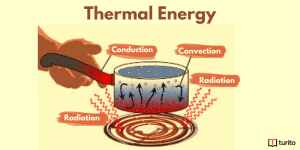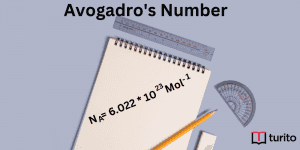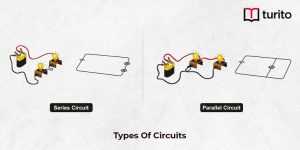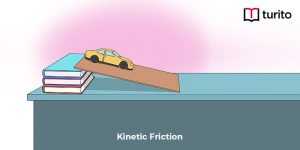Neutron Mass
The neutrons are elementary subatomic particles with the composition of one up quark and two down quarks, which belong to the fermion family. Neutrons can be indicated with the symbol n or nº. The mass of a neutron is somewhat more than that of a proton. The neutron has no charge, which suggests that it is neutral. The neutron is present inside the nucleus of an atom.
Discovery of Neutrons
- In 1920, British physicist Ernest Rutherford, born in New Zealand, proposed the original theory of neutrons.
- The British physicist James Chadwick is credited with discovering neutrons in 1932. In 1935, he received the physics Nobel prize for this accomplishment.
In the 1920s, it was widely believed that protons and nuclear electrons made up the structure of an atom. However, this was not met by the Heisenberg uncertainty correlation in quantum mechanics. In 1931, two German nuclear physicists discovered that polonium’s alpha particle radiation produces extremely penetrating radiation when coming into contact with beryllium, boron, or lithium. James Chadwick later demonstrated through a series of studies that the unusually penetrating radiation’s constituent particles were neutrons.
Formation of Neutron Mass
The neutrons in the universe are produced by the fusion inside the star’s core.
A neutron and a hydrogen nucleus (H) can be created when a high-energy cosmic radiation proton meets up with an atomic nucleus. This reaction can be described as follows:
proton + atomic nucleus → neutron + H
A high-energy neutron can also interact with an atomic nucleus in the opposite reaction, which results in the production of an electron, a proton, and an antineutrino (v):
neutron + atomic nucleus → proton + e + anti-neutrino
These newly formed particles move independently and frequently quite quickly. The enormous kinetic energy of these particles makes it very challenging to trap them.
What are Neutrons?
One of the main components of atomic nuclei is the subatomic particle known as the neutron. There is no net electric current attached to neutrons. However, they possess a mass somewhat greater than a proton’s. Since protons and neutrons function similarly inside an atom’s nuclei, they are known to be nucleons of the atom.
The mass of a neutron can be potentially used as an estimate for one atomic mass unit (generally calculated in AMU). Nuclear physics is the field of research that examines the characteristics of neutrons and how they interplay with other constituents of matter and electromagnetic waves.
The total number of neutrons and protons in a component’s atomic nucleus (also known as its “atomic number”) typically determines the component’s basic chemical and nuclear properties (commonly known as the neutron number). The mass of an atomic nucleus is the result of adding the total number of neutrons and protons in the atomic nucleus.
It is significant to remember that despite having the same atomic number, different isotopes of the same element have distinct mass numbers (which means that an atom may contain the exact number of protons in its atomic nuclei but may vary in the total number of neutrons present in their atomic nuclei).
The nuclear forces in the atom hold the neutrons and protons and neutrons together inside the nucleus of an atom. Neutrons are necessary for the stabilization of atomic nuclei. The only exception to this rule is the protium (hydrogen-1) atom nucleus. One of the most important uses of neutrons is the acceleration of nuclear fission reactions. And, in certain cases, nuclear fusion reactions inside nuclear reactors.
Charge and Mass of a Neutron
- A neutron has no electric charge attached to it. As a result, neutrons are subatomic particles with neutral charges.
- A neutron has a mass equivalent to 1.008 atomic mass units. The estimated mass of a neutron can be 1.674 * 10-27 kg when expressed in kilograms.
- The analytical method of mass spectrometry cannot easily measure the mass of neutrons since they have no electric field.
- Deuterium, a hydrogen isotope, has one proton, one neutron, and one electron as part of its atomic structure. The mass of a deuterium nucleus can be calculated by deducting the mass of a proton from that of a deuterium nucleus. Because the electron’s mass is extremely small compared to the masses of the neutron and proton, the mass of a neutron can be estimated by deducting the mass of a proton from the mass of a deuterium atom.
Mass Neutron
What is the mass of a neutron? Well, mass spectroscopy cannot directly determine the mass neutron. But this can be determined using deceptive techniques.
Mass Neutron (mN) = 1.674927471(21) * 10-27 kg
What is the Mass of a Neutron? (In other Units)
Alternate units of measurement can be used to express the neutron’s mass, such as the mass of a neutron mass in grams, the mass of a neutron in AMU, or the mass of a neutron in MeV.
| Mass Neutron | Value |
| mass of a neutron mass in Gram | 1.674927471(21) * 10-24 gm |
| mass of a neutron in AMU | 1.00866491588(49) u |
| mass of a neutron in MeV | 939.5654133(58) MeV/c2 |
| mass of a neutron in Kg | 1.674927471(21) * 10-27kg |
Why is the mass of a neutron heavier than a proton?
Subatomic particles are tinier than an atom and are present in the structure of atoms. Subatomic particles come in two forms: elementary and composite. Among these, neutrons are considered the heaviest subatomic particle in the atom.
Neutrons and protons are collectively known as the nucleons of the atom. “Quarks” are new fundamental particles that form the atoms’ neutrons and protons. There are a total of six known types of quarks, from which we will largely be focusing on two types of quarks. They are known as the “up” and “down” quarks. Quarks play a key role in distinguishing the compositions of the proton and neutron. At least one up quark and one down quark are present in each nucleon.
Consider that the up quark has a charge of +23 and the down quark has a charge of -13. The neutron possesses two down and one up quarks, compared to the proton’s two up and one down quarks. There are various ways to charge:
Qp=Qu+Qu+Qd = +1
Qn=Qd+Qd+Qu = 0
These numbers support the protons’ and neutrons’ charges. It’s discovered that the down quark has a greater mass than the up quark. The neutron’s mass was discovered to be somewhat higher than the proton’s because it contains two down quarks. As a result, protons do not break down, but neutrons do.
Note:
| The proton would decay into a neutron if the down quark were less heavy than the up quark. The entire cosmos would then consist solely of hydrogen atoms containing neutrons and neutrinos. Additionally, the neutron would break down very quickly if the down quark had a very heavy mass. |
Various Applications of Neutrons
Stimulating deferred and induced gamma rays from constituent materials is one of the neutrons’ most important uses. It is the foundation for neutron activation analysis (or NAA) research. Additionally, it serves as the foundation for research into prompt gamma neutron activation analysis (or PGNAA).
While PGNAA is most frequently used to study underground rocks on conveyors around bore wells and commercial bulk materials, NAA is most frequently used to test small samples of substances in a nuclear reactor.
Neutron scattering facilities, in which the radiation can also be used in field theory research with X-rays, have a critical purpose for cold, warm, and hot neutron radiation. When comparing atoms, neutrons are complementary to protons due to their varied scattering cross sections, energy spectrum for inelastic neutron spectroscopy, susceptibility to magnetism, and ultimately, their ability to penetrate deeply into the matter.
Conclusion
The mass of a neutron is comparably greater than the mass of a proton. The mass neutron at rest position is estimated to be 1.6749286 * ten⁻²⁷ kg. The units of energy and mass are identical in classical particle physics. In this context, the term “eV” refers to an electron volt equal to one neutron with no charge. The relative mass of a neutron is one, and a relative charge of zero. Students must solidly comprehend the topic to gain deeper knowledge in this area.
Frequently Asked Questions
1. What is the actual relative mass of a neutron?
Considering that electrons are only approximately 0.054 percent as massive as neutrons and protons are around 99.86 percent as massive. Each atom’s relative mass is expressed in kilograms. Therefore, the relative mass of a neutron is 1.
2. State the mass of a neutron and proton in AMU?
Proton and neutron masses are 1.0073 and 1.0087 AMU, respectively. While if the neutrons and protons collide to generate a helium nucleus (alpha particles), their combined mass would be 4.0015 AMU.
3. What is the mass of a neutron?
While electrons have virtually negligible mass, protons and neutrons each have a mass of 1. The simplest atoms are those of the hydrogen elements, which only have atoms with one proton and one electron. Where the electron circles the proton, which creates the nucleus.

Relevant Articles
Understanding Thermal Energy: What It Is and How It Works
Thermal energy is essential to our daily lives, from warming …
Understanding Thermal Energy: What It Is and How It Works Read More »
Read More >>Avogadro’s Number: Meaning, Importance, and More
Introduction The concept of measuring the microscopic particles that make …
Avogadro’s Number: Meaning, Importance, and More Read More »
Read More >>Kinetic Friction – Definition, Laws, Types
Kinetic Friction Kinetic force is a force acting between two …
Kinetic Friction – Definition, Laws, Types Read More »
Read More >>




















Comments: